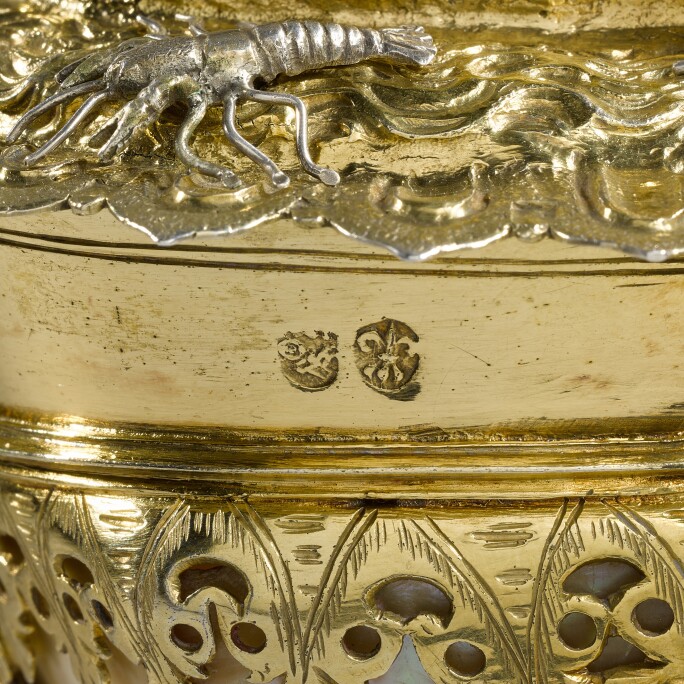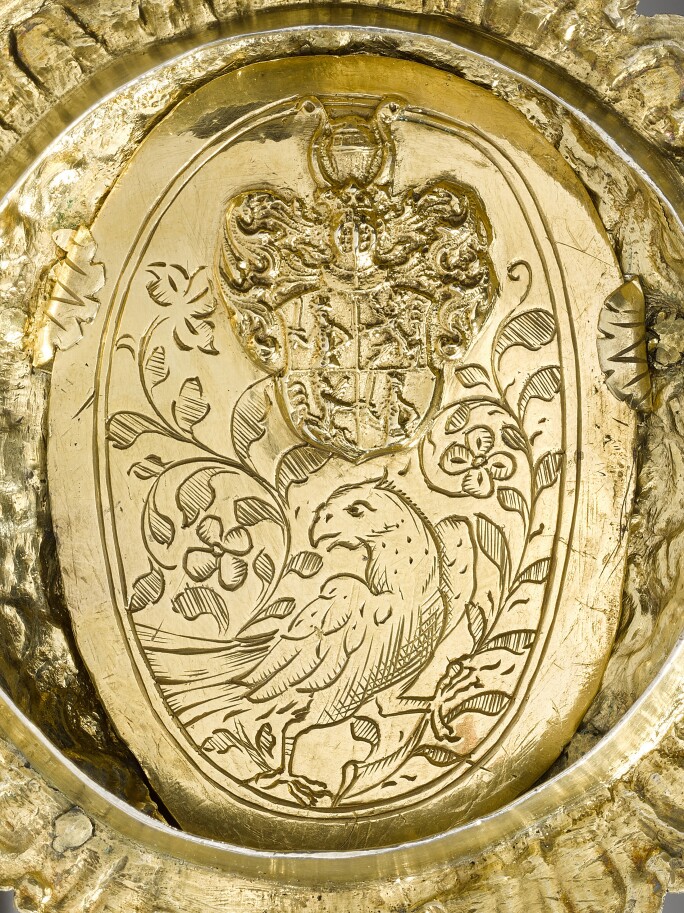The beauty and exoticism of turbo and nautilus shells have fascinated collectors in Europe since at least the end of the 13th century. The earliest known example of a silver-mounted cup making use of one of these shells is in the collection of All Souls College, Oxford, and can be dated to around 1300 by way of the enamelled coat-of-arms for Raoul de Nesle (died 1302). The early Dutch scientist Gerhardus Everardus Rumphius, working for the Dutch East India Company, (VOC) on Amboyna in the East Indies, records details of the nautilus shells found there in his D’AmboinischRaritkammer, (the Ambonese curiosity cabinet) published in Amsterdam in 1705:

‘...the shell is used most often to fashion beautiful drinking bowls such as those known in Europe; to do this one should use the biggest and smoothest ones and look very carefully that they do not have little holes that one can see through anon and which were made by certain warts…, a slimy worm that has a sharp little tooth which can drill through the hard shell…., One should place a complete one (Nautilus shell) in something sour for 10 or 12 days, such as spoiled rice, vinegar or water that has grape leaves rotting in it and then the outer shell will come away, which one should rub away by means of hard scouring…until the mother of pearl has come through everywhere, which one then rubs with a weak aqua-fortis, until it has acquired its perfect luster, and finally rinse it with soapy water’.

The maker's mark on the present lot (a fleur-de-lis) is unidentified but has been noted on three further items: a silver-gilt salt/spice cellar at the Schloss Ricklingen, Garben; an ampulla and dish at the church of St. Bartholomew in Niedermotzing; a chalice and paten, sold Sotheby's, Amsterdam, 31 October 2005, lot 1809. One possibility is Andre Schiller based on the fact that several coats-of-arms of the Schiller family consist of fleurs-de-lis.1 It is known that Andre Schiller's widow Christina Schreffin married Mathes Wiexner, another goldsmith, probably also from Straubing, around 1600.

The coat-of-arms on the inside of the cover belongs to the Dürniz/Dürnitzel family of Straubing. In 1606 Thomas Dürnitzel zum Hönhart und der Azelburg, mayor of Straubing, was enobled by the Emperor Rudolf II. The arms of Thomas Dürnitzel can be found on a windowpane in the Chapel of Dürnitzl, dated 1593.2 His two sons, Johann Georg and Christoph also became mayors of Straubing.
The imagery of Jonah and the Whale can be found on nautilus shell cups and similar standing cups. A fine example is a drinking horn with Jonah and the whale imagery, now in the Berlin Kunstgewerbemuseum.3 The drinking horn was made by Caspar Schiller (of the same family) in Straubing in 1591. Not only the imagery, but also the shapes of the bases of both objects should be compared.
Notes
1. O. Neubecker; Grosses Wappen-Bilder-Lexikon
2. Die Kunstdenkmaler von Bayern, Vol. VI, Stadt Straubingen, p 38.
3. Stiftung Preussischer Kunstbesitz, Ausgewählte Werke; Berlin; 1963; no. 105